Native Instruments is one of the best-known players in the music production software industry. In fact, many other software platforms for artists depend on Native Instruments. One of Overthink Group’s co-founders is a musician and producer (Lurm’s next EP is set to hit this October), and we wanted to see what we could learn from Native Instruments’ (NI) SEO situation.
What we found at NI was no surprise—but it led to finding a juicy opportunity for content marketers in the music production tech space. (Along with some takeaways for content marketers in any industry.)
It turns out this industry has a LOT of room for an SEO or content team to wrack up a good deal of traffic. The search volume is there—but the content isn’t.
Native Instruments’ best blog post
The Native Instruments blog has a lot of content. They’ve published about 225 posts in the last year—roughly four new posts per week. Granted, some of these posts are in German, which makes sense as the company is based in Berlin.
Overall, their organic traffic isn’t much to write home about. According to Ahrefs’ estimates, they’re pulling in about 8,200 organic visits per month, and they reached this after blogging for what seems like only about a year. That’s not a ton of traffic, but they are picking up steam. From July 2018 to August 2018, their estimated traffic increased by about 3,000 visits per month.
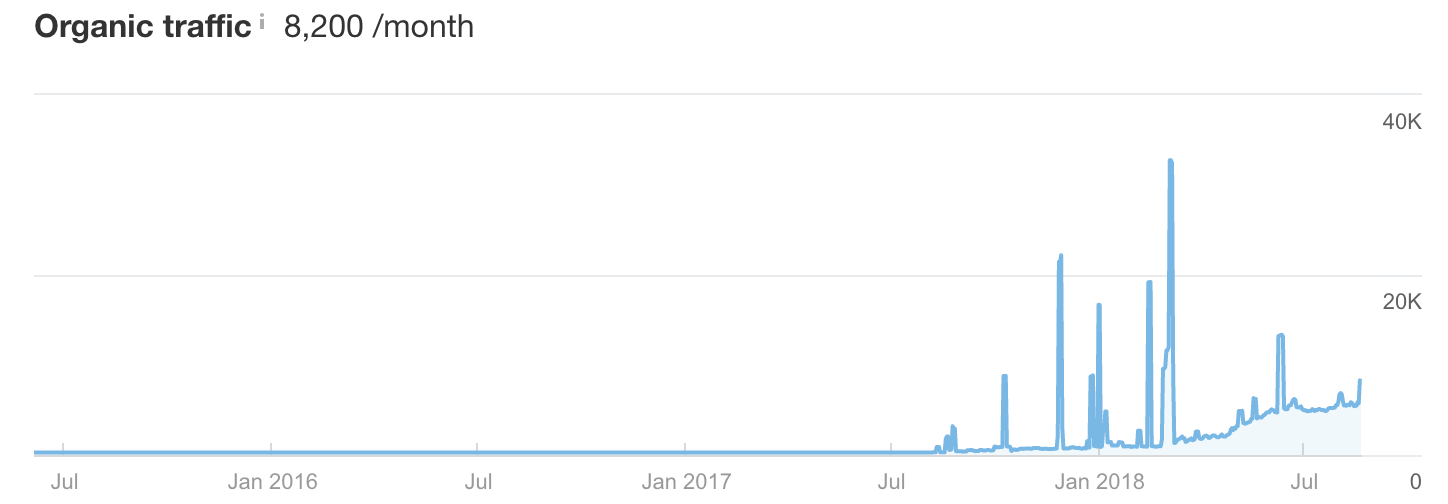
And about a quarter of that traffic is getting pulled in by a single blog post: this list of ten virtual guitars. It was only published in March 2018, but it’s already getting more than 1,900 visits every month. This post lists ten tools that music producers can use to create electric and acoustic guitar sounds digitally—and they’re all compatible with Native Instruments’ hardware and software.
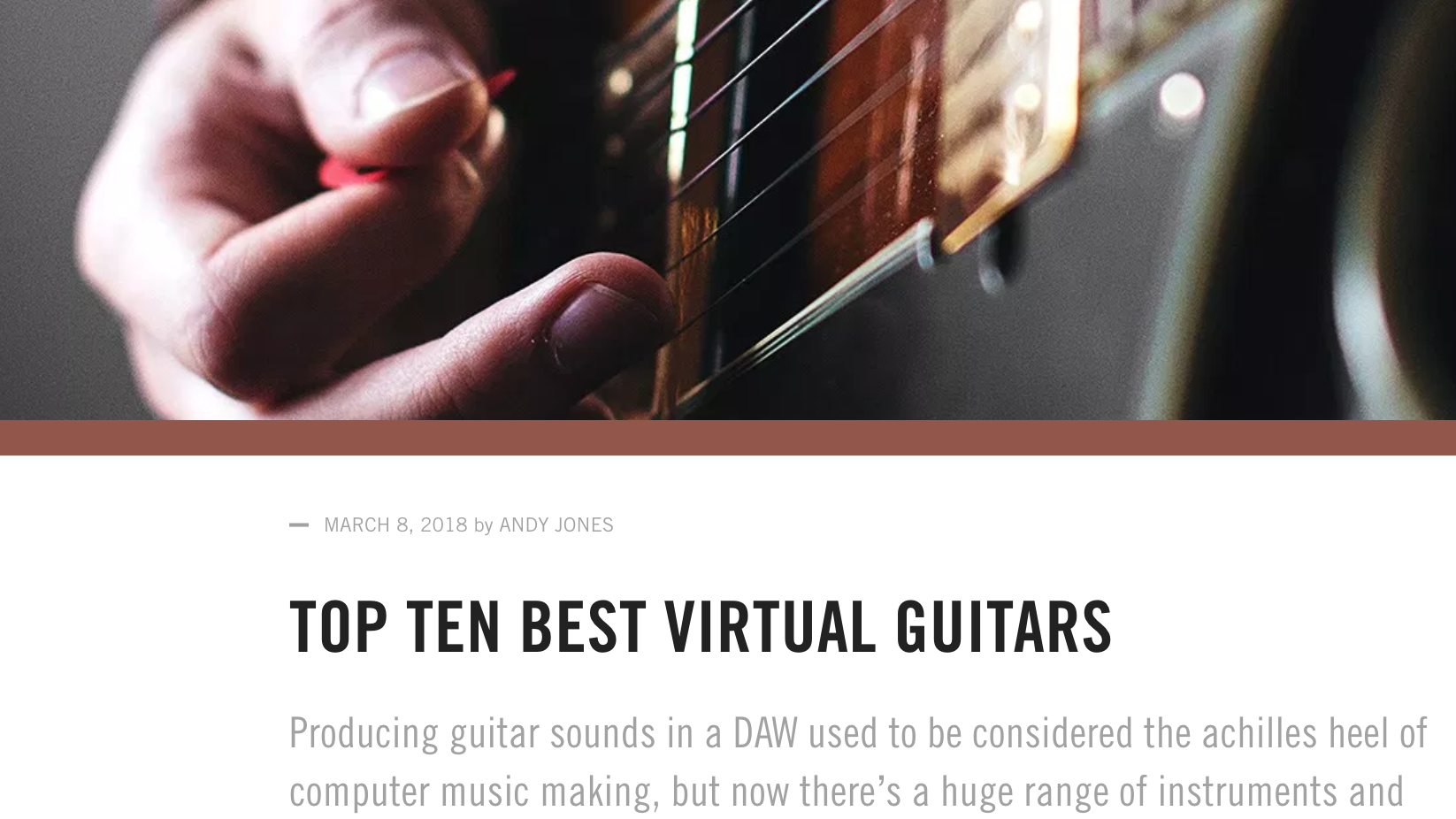
It ranks #3 for “best guitar VST” (Virtual Studio Technology) and #2 for “best electric guitar vst”—two queries that people who should be using Native Instruments products would Google if they wanted to expand their arsenal of digital instruments.
As a blog post itself, there’s nothing all that special about it. It’s about 1,200 words long—which isn’t a very lengthy post by content marketing standards, but well longer than the average post on NI’s blog (825 words). It’s no showstopper on social media, either. The post has only garnered about 330 total engagements on Facebook and Twitter, per BuzzSumo. That’s above the median number of engagements, but out of the 225 posts from Native Instruments over the past year, it’s #91 in terms of total social media engagements.

The content itself is straightforward. There’s a quick intro up top, followed by an unordered list of 10 virtual guitars that the Native Instruments team recommends. Each instrument has a quick profile, including:
- A single-line descriptive heading of what the instrument is for
- The name of the instrument (with a link) as a subtitle
- A single-paragraph description of the instrument
- A screenshot of the virtual instrument in use
- A soundcloud sample of that instrument in use
- A textlink to where you can purchase or download that instrument
A lot of wins here when it comes to satisfying search intent. People who are looking for a virtual guitar are going to be most interested in how it sounds and how it works (namely, the interface). This blog post gives them both, and links to external pages where readers can learn more about the individual instruments.
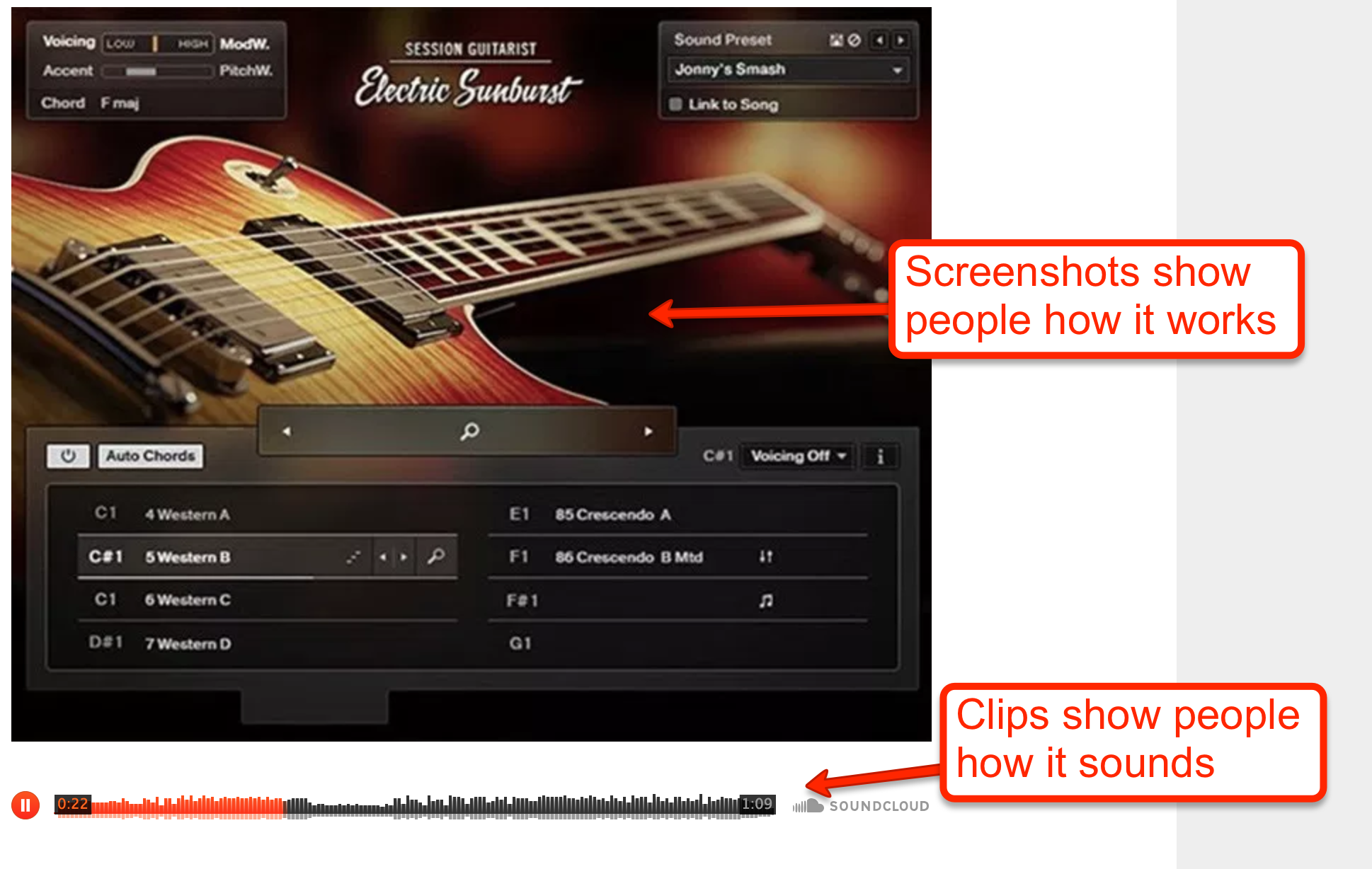
Plus, the article gives each virtual guitar an individual shoutout for why it’s included in this “best-of” list, whether it’s best for “acoustic strumming” or best for “huge, out-there guitar sounds.”

[Shrug] Don’t ask me: I’m not a guitarist!
How Native Instruments could make it better
This post is already an example of the kind of content Native Instrument’s market wants more of. But there are a few ways they could make it even better:
- Add a call to action to download their free Kontakt player. It’s a free download, and it’s compatible with all the virtual guitars on this list. It’s an obvious win.
- The post could be easier to navigate. Adding a few bullet points to each entry would make the post more skimmable, and a table of contents with jumplinks would make it easier for people hitting the page from Google to find their way around this list.
- Link to (and create) related blog posts! This post brings up amp simulators, envelopes, a player program, and more good stuff that readers may want to learn more about. NI could create more informative blog posts and link to those—which gives readers a better experience and builds some nice internal links on the blog.
And as a general note (I have to say it): they should consider moving the blog from a subdomain to a subdirectory.
It’s common to see companies stick their blogs on subdomains. (E.g., their blog lives at BLOG.website.com instead of website.com/BLOG.) It’s easier to allow a marketing team to play with a blog when it’s sequestered off from the Web app.
But that’s almost always an SEO mistake. Blogs on subdomains consistently get a hike in organic traffic and rankings when they’re moved to subfolders. And plenty of companies experience a dropoff in traffic when they move their blogs to subdomains.
SEO wizard Rand Fishkin even went on record in 2015 saying of subdomain blogs: “Don’t use them unless you absolutely have no choice.”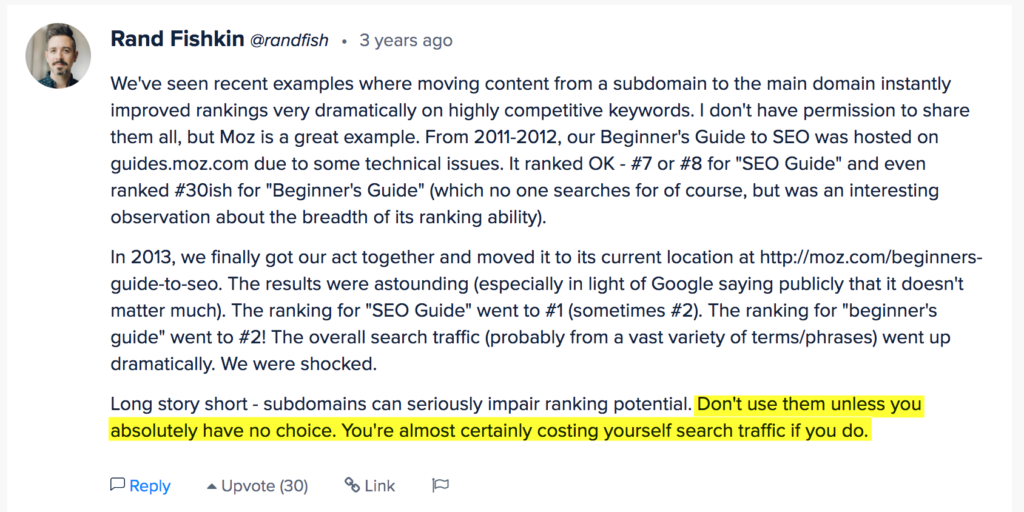
This is just one post, but it represents a big opportunity for content marketers in the music production tech industry.
The big opportunity
The blog post itself isn’t anything special to seasoned content marketers. But after we dug into this post, we found a ton of opportunity in the search space where Native Instruments, and really any reputable music production tech company could gain a ton of traction.
It turns out there’s a great deal of search demand for virtual studio technology (VSTs) in general, and you can rank for these queries with relatively low difficulty.
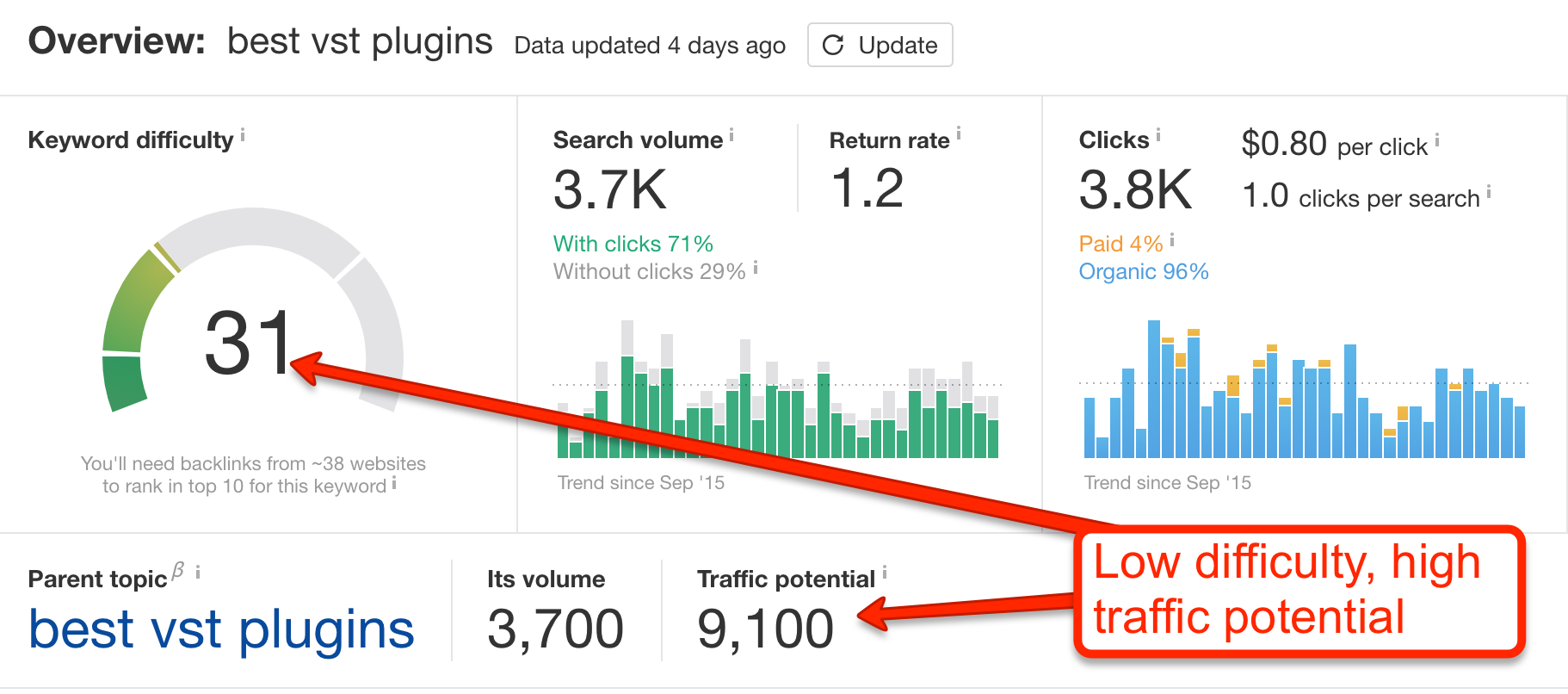
And it gets even better. The competition surrounding virtual versions of specific instruments is even thinner. For example, the search for virtual violins and flutes is especially ripe for the picking. (And Native Instruments doesn’t currently rank for either.)
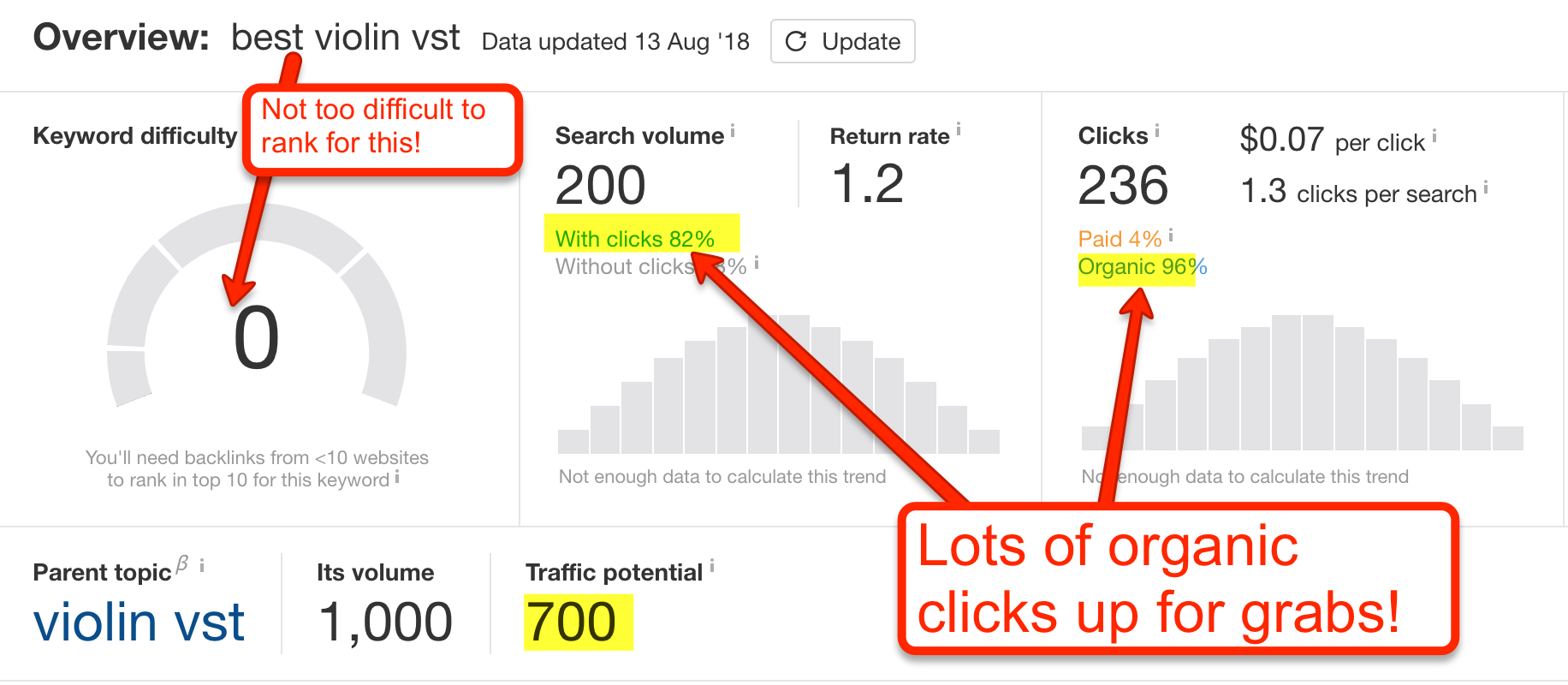
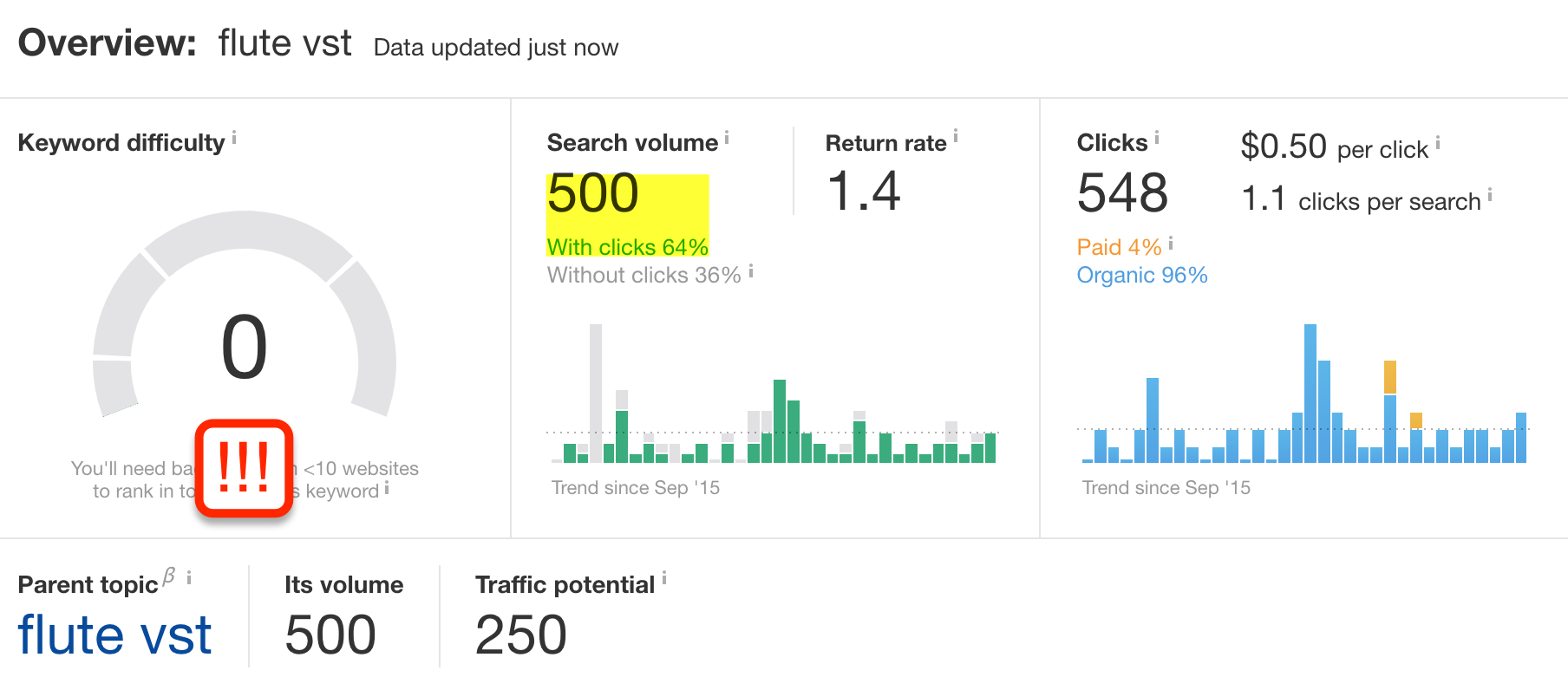
The bottom line: people seem to be hungry for some kind of authority to speak on this topic. They don’t want to slog through forum pages and subreddits to find dependable virtual instruments—they want an already-trusted brand to point them in a good direction.
Lessons for outsiders
Even if you’re not in the music tech industry, there are a few big takeaways you can learn from this.
1. Recommend complementors
Native Instruments is in an interesting spot: they create their own VSTs and they run the main program that people run other producers‘ VSTs on. Odds are you’re not in as convoluted an industry as music production software—but you can still do what NI did with this blog post.
Think of the product categories that complement yours. If you’re marketing email software, then there’s a good chance that your tool is just one in a toolbelt of complementary software programs. Even if you’re a giant like HubSpot, your clients are probably using a smattering of different marketing tools to get the job done. Use this to your advantage: publish best-of lists of social media scheduling tools, lead-generation WordPress plugins, project management software, etc.
2. Mine forums for keyword ideas
One thing we found by digging around in NI’s SEO world is that a lot of the search traffic is going to forums and communities. This is OK, but potential customers (especially executive decision-makers) don’t always want to sift through pages and pages of forum threads. They often want someone to clarify the issues for them, narrowing down their options and pointing them in a good direction.
In some industries, decision-makers are faced with many, many decisions on types of equipment or goods to buy (e.g., different musical instruments, different roofing materials, different coffee bean origins, etc.). If you’re in an industry like this, odds are there are at least a few popular online communities where people discuss these choices.
You can mine these communities for topic ideas—I’ve recorded a quick tutorial on exactly how to do that here.
Blog strategically, friends
Sometimes you tear down a blog post and find plenty of gold inside (like with Fitbit and Zapier). But sometimes you tear down a post and learn more from what nobody in the market is doing. It was a fun surprise for us—I hope it’s helpful to you, too.


